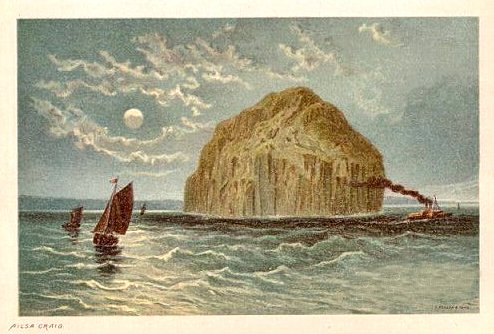 |
|
|
This is a wonderful antique view of the island/rock Aisla Craig in the Firth of Clyde. Lithograph by T. Nelson & Sons of London. This distinctive dome- shaped island-rock lies 10 miles (16 km) off the coast of South Ayrshire and rises sharply from the Firth of Clyde to a height of 340m (1114 feet). Ailsa Craig, which comes from the Gaelic for 'Fairy Rock', is 1200m (1300 yards) long and 800m (900 yards) wide, with an area of 100 ha (245 acres). It is also known as Paddy's Milestone owing to its position as a landmark en route from Ireland. The island was the heart of an ancient volcano, its rock exhibiting fine columnar structure and was renowned as the source of a superior micro-granite used to fashion curling stones. By the late 19th Century the island had a population of 29 people, working in the quarries or the light-house, which was built in 1883-6 by Thomas Stevenson and his nephew David. Since the closure of the quarries and automation of the light, Ailsa Craig has been inhabited only by a sizeable and important colony of sea-birds. The island is home to one of the largest gannet colonies in the world, with more than 70,000 birds, and is designated as a European Special Protection Area. |